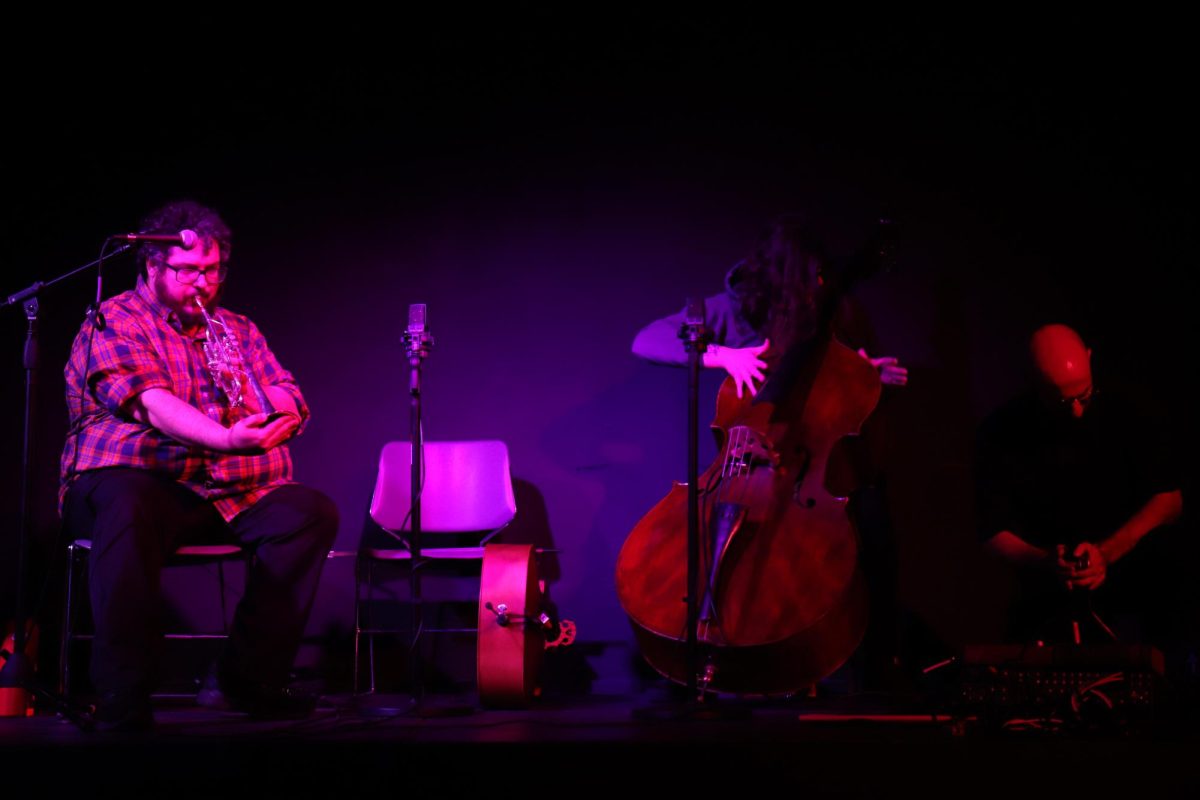Lights, camera, action. Cirque du Soleil is an international production that has made its way into the city of San Antonio. As the crew and performers prepared to execute a once-in-a-lifetime performance, The Paisano was given the opportunity to attend a behind-the-scenes production tour before their first showing.
The overall production has three main tents that are utilized: the artistic, big top and concession tent. The tour, given by Senior Publicist Christine Achampong, began in the artistic tent, where we got the chance to observe the cast practice their complex yet astounding stunts. Our media team also got a view of the various glamorous costumes that performers on the main stage will wear. In this portion of the tour, we mainly got to see the actors and performers in action before the big show, practicing their incredible aerobics, dancing and juggling skills.
As the tour continued, we were shown to the backstage area, where we were able to look at all of the technical work that happens behind the curtains. Here, we were shown the automatic spotlight system that employees of the show use to work with the performers on lighting and stage placement. This is an essential aspect of the show, as lighting has a substantial impact on the production and overall performance of the actors. Next, we were shown the sound system where all the music and sounds of the show will be played. In huge productions, such as BAZZAR’s Cirque du Soleil, the music is another vital element for the audience to have a fun and immersive experience.
Next, in the most exciting part of the tour, we entered the big top tent, where the main stage is. Even before the main show began, the crew’s dedication was plainly displayed as they described the set-up process. “Everything took around eight days to build, including the big top tent,” Achampong said. “The tent is 62 feet high and is 160 feet all around, supported by four masts. It takes about 85 people to raise it.” Understanding the hard work that goes into setting up the shows gives the audience a greater appreciation for the theatrical art of the production.
As the actors prepared for their upcoming performance, The Paisano got the opportunity to see them rehearse their skills on the main stage. The act that was practiced during the duration of the tour was teeterboard, a feat that involves skilled acrobats balancing on a see-saw-like plank while performing skillful aerobic tricks in the air. This was indeed a sight to see, even if it was just a rehearsal.
As a part of the tour, we also got a one-on-one interview with the Artistic Director Johnny Kim, where he gave a rundown of the production and his role within Cirque du Soleil. He began by giving a brief overview of the show, from setting up to construction.
“We have, I think, over 75 trucks that carry everything that you see here,” Kim said. “Whether it’s in the big top, concession, back of house or traveling kitchen. All the things that are involved with this big top gets traveled, and then it has to be set up, and so we have staff and crew that do that, but we also hire over 100 local staff to help us as well.”
Although the production has to work at a fast pace to make sure that everything is unloaded and ready for the cast to practice and perform. Kim ensured that it is a very thorough process as he went on to say, “It’s compact, very compressed, very organized and very detailed, to ensure that everything is in order so that we can start the show as if we’ve been here for months.”
As the interviews proceeded, Kim further explained his previous experiences in theatrical art and expressed his passion in working for Cirque du Soleil.
“I joined circus arts for my career in 2007, and I kind of never left,” Kim said. “It was that moment of joining the circus world and loving it so much that I kind of never left. And so that transition from being an artist on stage to being an artistic director was an easy transition for me.”
Kim also revealed his favorite part of his job, which was being able to interact with the actors and see their natural growth as an artist.
“If we look back at what they had accomplished two months ago and to where they are now, there is a huge growth to where you can see them transform into a better artist, a better person. It’s really cool to see that kind of growth.”
Speaking to Kim provided a more in-depth understanding of the set-up process, the cast and the passion that surrounds being a part of such a prestigious show.
Achampong led the media group back to the artistic tent to get a more detailed look at the wardrobe department. The production revealed that they own approximately 140 costumes, which have to be packed, washed and maintained after each show. According to Achampong, the crew has to do at least 50 sets of laundry a day, which takes approximately four hours. A neat thing that was revealed about the production of the costumes was that each actor gets 3D scanned to get an accurate sizing for their outfit. In show business, it is important that performers are comfortable in their costumes to ensure an enjoyable experience for the audience and themselves.
Another thing that was mentioned within this behind-the-scenes journey is the makeup process that actors go through. Performers personally attend a makeup session at the Cirque du Soleil headquarters in Montreal so they can learn to do their make-up themselves. The makeup artists will first do the actors’ makeup themselves, showing them what their performance look will be. Next, they only do half of their face so the actor can replicate it before the performers are asked to do the final look themselves. The performers truly put in a lot of work and practice to ensure a successful and entertaining show for their audience.
Cirque du Soleil is an overall creative and engaging show that depicts an appreciation for the art of theater. If you are interested in attending one of their many showings, visit https://www.cirquedusoleil.com/usa/san-antonio/bazzar/buy-tickets to purchase your tickets.









